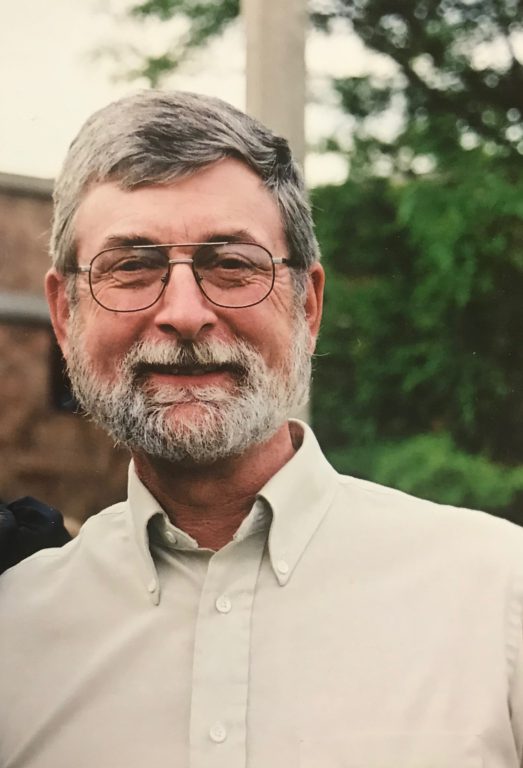Remembering John Pawasarat
UWM researcher had huge impact with his studies.
Last week John Pawasarat passed away at age 70, a victim of cancer he courageously fought for years. He served as the director of the UW-Milwaukee Employment & Training Institute for decades and wrote or co-wrote countless studies for ETI from 1980 until 2017.
Perhaps no study had more impact than his research on Wisconsin residents lacking a drivers license, which influenced many court decisions on laws requiring voters to show photo ID. Pawasarat found that only 53 percent of black adults and 52 percent of Hispanic adults in Wisconsin had a valid driver’s license compared to 85 percent of white adults. What made the research particularly powerful is that it was not based on a survey or sample of citizens: Pawasarat had doggedly created a file of every citizen in Wisconsin, yielding probably the most cited research in the nation on this topic.
In May 2014 federal Judge Lynn Adelman quoted the ETI research in his decision finding the state photo ID law was unconstitutional, given its adverse impact on minority voters. The case went to the federal Appeals Court and then to the U.S. Supreme Court which voted 6-3 in October 2014 to block the law’s implementation for the Wisconsin elections scheduled in November.
The research was referenced by Gov. Jim Doyle in vetoing a photo ID law and often cited in other states, courts and legal reviews.
In the key U.S. Supreme Court Decision of 2008, Crawford v. Marion County Election Board, an Indiana photo ID law was upheld, in a 6-3 decision written by Justice John Paul Stevens which found that opponents of the law hadn’t proven its requirements would fall disproportionately on certain classes of voters. But Justice David Souter dissented, citing the ETI research showing the ID requirement would fall disproportionately on minority voters.
Years later Stevens expressed regret about the decision in a story by the Washington Post. “I thought in that case I had a duty to confine myself to what the record [in the case filings] did prove… as a result, we ended up with a fairly unfortunate decision.”
Noting Souter’s dissent and its use of the ETI study, Stevens said: “I thought David wrote one of his best opinions, relying partly on material that was outside the record.”
Pawasarat also applied this research through many other studies to show it was a major factor preventing minority workers from getting to jobs in suburbs without bus connections. He did research showing that 60 percent of minorities who lacked a drivers license had lost it not because of unsafe driving, but for unpaid fines — municipal tickets often issued for infractions unrelated to driving like loitering, curfew violations, underage drinking and shoplifting.
And he showed that the lack of a driver’s license was a key factor preventing ex-offenders from become gainfully employed, with only seven percent of Milwaukee County residents released from state correctional facilities having a valid driver’s license. His research helped lead to the creation of the the Center for Driver’s License Recovery and Employability, to increase the number of licensed drivers among Milwaukee County’s low-income population.
It also helped inspire a National Public Radio story, prompted calls to reform the Milwaukee Municipal Court, and helped guide then-state Sen. Gwen Moore in getting a law passed in 1999 “that prevented judges from suspending licenses of juveniles solely for the failure to pay fines or citations related to non-driving municipal violations.” (After significant backlash from judges, the legislature rescinded the law.)
“John Pawasarat’s career in academia helped deepen the public’s understanding of injustices occurring in Milwaukee and beyond,” says Moore, now the Congresswomen from Wisconsin’s Fourth District. “This is critically important because we can’t drive change if we don’t know where to start.”
While Pawasarat was the lead researcher on the driver’s license studies, he collaborated for decades with his wife Lois Quinn, who had done years of research with other groups before joining him at ETI, with each taking the lead on studies with the other in support. The topics they took on were remarkably wide ranging, including studies on problems with the state’s child care system, job and apprenticeship discrimination, biases in sociological research on racial integration, the impact of the mortgage foreclosure crisis, assets-based analysis of inner-city neighborhoods (keying on ways to improve the neighborhoods) and the impact of the earned income tax in reducing poverty.
In 1992 the researchers themselves became the subject of the news when the administration of Gov. Tommy Thompson fired ETI after first selecting the group to do an outside analysis of the impact of his signature Learnfare program, which reduced the AFDC grant for families whose teens who were truant or frequently absent from school. ETI found the majority of Learnfare students showed no improvement in school attendance, and after a year their absence rates actually increased. This was in stark contrast to state claims that 70 percent of students in the Learnfare program had improved their attendance.
State officials were not happy. Gerald Whitburn, the state Secretary of Health and Human Services, damned ETI in the press as “a liberal boutique” and said researchers failed to give the program a “fair shake.”
In response Pawasarat noted that ETI had been asked by state officials to make changes but refused, and the research followed the guidelines state officials had agreed upon. “It was pretty clear that, had the study been positive on the effect of Learnfare on attendance, these issues would have never come up,” Pawasarat said.
Whitburn’s decision cost ETI more than $100,000 in research money, but Pawasarat said he never regretted losing the contract.
The Thompson administration instead chose the Legislative Audit Bureau to complete the study and four years later, its report made the same conclusion: there was ”no detectable effect on school participation” attributable to Learnfare.
I saw Pawasarat’s unique style of researching close-up, as he also worked as a free lance journalist in the early 1980s, with me as co-writer on a number of stories. Most notably, we did a series of front-page stories for the old Milwaukee Sentinel documenting inaccuracies in how Milwaukee Public Schools reported achievement test results. The key finding was that the “8th grade reading” test required of all high school graduates was not what it claimed to be. Pawasarat tracked down the author of the achievement test used and got him on the record saying the cutoff score used by MPS was actually equivalent to an average fifth grade reading level. In response the Milwaukee School Board ordered the MPS administration to reform its testing system.
Pawasarat also came up with the ingenious idea of studying the Village of Kohler to test the impact of two state property tax reductions for manufacturers: the machinery and equipment and the manufacturers inventory exemptions. The actual impact of these changes on individual companies had never been measured, but as the Kohler company was the the only business in the village, the record of business taxes paid was also the exact amount the company paid. And the village records showed that 75 percent of the company’s $190 million in property had been removed from the tax rolls by these two exemptions. The change helped lead to a tripling of the village’s residential property taxes.
Pawasarat was a courageous contrarian who was anything but an ivory tower academic. He was interested in research with practical applications that could improve the lives of all citizens, particularly poor and minority people. Before working as a researcher, he taught basic education to adults at a south side school, set up and directed three “Right to Read” adult literacy centers and introduced videotape lending in the Milwaukee public libraries. As a researcher, he identified several thousand pre-teens most in need of county social services, and worked with teachers at Ethan Allen and Lincoln Hills schools to improve vocational education in Wisconsin’s juvenile correctional facilities.
As Moore puts it: “I am a better lawmaker because of his work. His impact on the community was deeply felt and he will be missed by many.”
A brief memorial service will be held on Saturday, January 11th at 1:00 p.m. followed by a reception until 4:00 p.m. at the UWM Hefter Conference Center, 3271 N. Lake Dr., on Milwaukee’s East Side. The family has asked that in lieu of flowers, donations are appreciated to Wisconsin Community Services to help support its Center for Driver’s License Recovery & Employability.
If you think stories like this are important, become a member of Urban Milwaukee and help support real, independent journalism. Plus you get some cool added benefits.
Murphy's Law
-
National Media Discovers Mayor Johnson
 Jul 16th, 2024 by Bruce Murphy
Jul 16th, 2024 by Bruce Murphy
-
Milwaukee Arts Groups in Big Trouble
 Jul 10th, 2024 by Bruce Murphy
Jul 10th, 2024 by Bruce Murphy
-
The Plague of Rising Health Care Costs
 Jul 8th, 2024 by Bruce Murphy
Jul 8th, 2024 by Bruce Murphy





















John did great work and had a fabulous sense of humor. Things will not be the same with him gone. He will be missed.
John was always a fighter for doing the best for the least of us. He will be missed. Thanks, Bruce, for a fitting obituary.
I knew he was a good person and researcher. But I didn’t know HOW important and far reaching his work was until you put it together in this piece. Thanks.